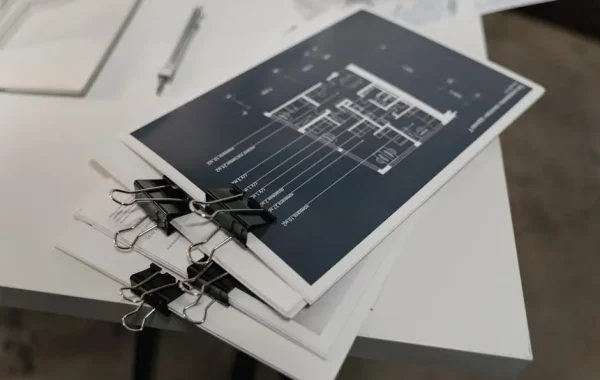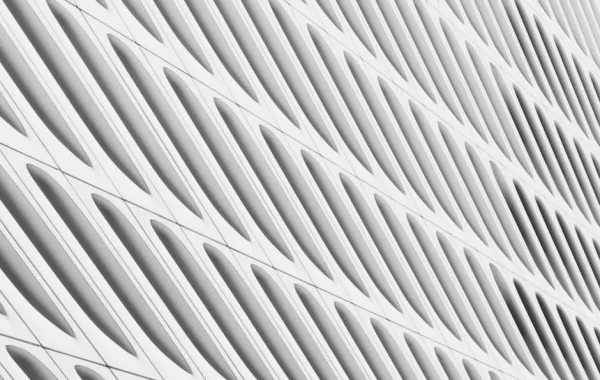
What Are the Latest Trends in Office Design?
Office design trends are always evolving to meet the needs of modern workplaces. In this blog, we’ll explore the latest trends that are shaping the future of office spaces, making them more productive, collaborative, and enjoyable to work in. The environment we work in can have a huge impact on our overall happiness and efficiency, so it’s important to stay on top of these developments.
As we dive into these trends, you’ll see how they reflect the ways we work today and the priorities we hold dear, such as flexibility, sustainability, and wellness. It’s as if office design is having a makeover, embracing exciting ideas that cater to diverse work styles while also responding to the growing knowledge about health and well-being in the workplace.
By creating spaces that reflect our needs and preferences, designers are not just making aesthetic improvements; they’re enhancing the overall work experience. So, let’s take a closer look at how these innovations are not only transforming our workplaces but also encouraging us to connect, thrive, and enjoy our time on the job. Whether you’re a business owner looking to revamp an office or an employee interested in how your space can better serve you, understanding these trends can lead to a workspace that is not only functional but also a joy to be in.
Flexible Workspaces
Flexible workspaces allow employees to choose their work environment, whether it’s a quiet zone for focused work or a collaborative area for teamwork. This trend is all about providing options to cater to different work styles.
Remarkably, a flexible working arrangement is a top three motivator for job-seeking employees. With the ability to switch between various work settings, such as quiet zones, communal tables, and private pods, employees feel empowered to select the environment that best suits their task at hand. This autonomy can enhance productivity and job satisfaction, offering them the freedom to work at their best at all times.
Activity-based layouts are gaining popularity as they enable workers to move freely and find the perfect spot for their current task. According to the most important office design trends for 2024, incorporating quiet pods will be commonplace as the demand for privacy crystallizes. These pods offer noise reduction and visual seclusion, catering to the need for focused work. Additionally, they create a sense of personal space even in open environments, making it easier for employees to concentrate on their tasks without distractions.
This trend reflects a deeper understanding of how various work styles affect productivity. By allowing employees to pick where they work best—whether it’s in a lively collaborative area or a serene quiet corner—companies are showing that they value individual preferences. It’s like creating a customized experience for each person based on their unique needs throughout the day. Imagine being able to switch from a vibrant brainstorming nook to a cozy hideaway whenever you need a change of scenery! This adaptability not only keeps energy levels up but also fosters creativity and innovation.
Moreover, these layouts align perfectly with the growing trend of remote and hybrid work, where flexibility is key. Employers are recognizing that providing choices in workspaces can lead to happier employees, ultimately contributing to lower turnover rates. As organizations adapt to these changes, the future of office design looks bright, promising more thoughtful and supportive environments where everyone can flourish.
Sustainable and Eco-Friendly Designs
Sustainable office design is no longer optional. Offices are now incorporating eco-friendly materials, energy-efficient systems, and green building certifications to reduce the environmental impact and promote a healthier workplace.
In today’s world, where climate change and environmental preservation are at the forefront of our minds, many companies are taking real steps to embrace sustainable designs. This can include everything from using reclaimed wood for furniture to setting up energy-efficient lighting systems. The goal is to create spaces that are not only stunning but also eco-friendly. This commitment to sustainability doesn’t just help our planet; it also resonates with employees and clients who care about making a positive impact on the environment.
One significant trend in eco-friendly office design is the use of green walls and indoor plants. These elements not only improve air quality but also create a calming atmosphere that can reduce stress and improve overall well-being. Imagine walking into your workplace and being greeted by lush greenery, with plants trailing down the walls and vibrant flowers brightening your space. Not only does this give offices a fresh and inviting look, but it also helps in purifying the air we breathe.
Incorporating nature into office design can lead to a more productive workforce. Studies have shown that employees who work in green environments tend to be more engaged and motivated. That means investing in eco-friendly features isn’t just good for the planet—it’s great for business too! Plus, having a few plants around can brighten anyone’s mood, making the workday feel just a bit more enjoyable.
Green walls serve another purpose, too: they can act as sound barriers, which is especially beneficial in open office layouts. This added layer of tranquility can help employees focus better without the usual distractions of office chatter. So, whether you’re considering a major overhaul of your office space or just adding a few pots of greenery, keep in mind that these eco-friendly touches can create a healthier and happier work environment.
In addition to all these benefits, embracing sustainability through office design reflects a company’s values, appealing to both current and potential employees. When a workplace provides a refreshing, green atmosphere, it shows that the organization puts thought into the well-being of its staff and the community at large, making it a more desirable place to work.
Incorporating Technology
From smart lighting and climate control to advanced video conferencing systems, the latest office designs integrate technology to create a more efficient and comfortable working environment.
The integration of technology in office spaces has become a cornerstone of modern design. Smart offices are equipped with automation systems that allow employees to control lighting, temperature, and even their desks with just a few taps on their smartphones. This not only enhances comfort but also creates a more agile and responsive workplace.
Video conferencing technologies have become an essential part of the office landscape, especially with the rise of remote and hybrid work models. High-quality audio and video systems are being incorporated into meeting rooms to facilitate smooth and uninterrupted communication, bridging the gap between in-office and remote team members. Imagine being in a meeting where everyone can hear and see each other clearly, regardless of where they are located. This real-time interaction not only fosters teamwork but also helps build rapport among colleagues, making remote working feel less isolated.
Additionally, the integration of virtual collaboration tools is enhancing the way teams interact. Features like screen sharing, virtual whiteboards, and interactive presentations allow for a more engaging experience, making it easy to brainstorm and share ideas without being in the same room. This modernization is a game-changer for companies that are embracing a flexible work culture, as it empowers employees to stay connected and engaged no matter where they’re working from.
Moreover, as more companies invest in cutting-edge technology, the importance of a reliable IT infrastructure becomes clear. Strong Wi-Fi connections, adequate bandwidth, and well-designed tech setups in meeting spaces are crucial to ensure that technology works seamlessly during important calls and presentations. This focus on technology isn’t just about keeping things running smoothly; it’s also about enhancing employee satisfaction and productivity.
In this age of digital communication, office design is morphing to prioritize tech requirements while still maintaining a warm and inviting atmosphere. By combining the best of both worlds—modern technology with a focus on employee comfort—organizations can create environments that support innovation and collaboration. Ultimately, embracing these technological innovations in office design is about making sure everyone feels part of the team, which is essential for nurturing creativity and driving business success in today’s rapidly changing work landscape.
Biophilic Design
Biophilic design focuses on bringing the outdoors in, with elements like natural light, plants, and natural materials. This connection to nature can improve well-being and increase productivity.
Incorporating natural elements into office design has been shown to have a multitude of benefits, including reduced stress levels and increased creativity. By using materials such as wood and stone, and ensuring ample exposure to natural light, offices can create a warm, inviting atmosphere that feels both organic and inspiring.
Furthermore, biophilic design often includes features like indoor gardens or water elements, which can make a significant difference in employee morale. These natural aesthetics not only beautify the workspace but also enhance cognitive function and emotional health, making the office a more pleasant place to be.
For more insights into how biophilic design can enhance your office space, consider integrating various types of plants, using natural color palettes, and maximizing views of the outdoors, which are all key aspects of this design philosophy. By bringing elements of nature into the office, you create a refreshing escape from the hustle and bustle of daily work. It’s all about creating spaces that not only look good but feel good too. A well-placed plant or a large window can do wonders, boosting mood and productivity by offering a moment of tranquility amidst a busy day.
Think about adding elements that mimic nature, like water features or natural textures. The sound of running water can be incredibly soothing, helping to reduce stress and create a more peaceful atmosphere. When employees feel calm and centered, it often translates into greater creativity and efficiency. This connection to nature isn’t just a trend; it’s a fundamental shift in how we think about our workspaces.
So, if you’re considering a renovation or just want to spruce up your office a bit, take a moment to explore biophilic design. Not only will you be investing in a more pleasant work environment, but you’ll also be aligning your office with the latest trends in office design that prioritize health, happiness, and harmony.
Wellness-Focused Spaces
Wellness is becoming a priority in office design, with features like ergonomic furniture, quiet rooms, and wellness programs aimed at promoting physical and mental health.
The emphasis on wellness in the workplace is manifesting in various ways. Ergonomic furniture is now a staple, designed to keep employees comfortable and prevent long-term health issues related to poor posture and repetitive movements. Beyond physical health, mental well-being is also being prioritized through the creation of quiet rooms and meditation spaces where employees can take a break and recharge.
Wellness programs including on-site fitness centers, yoga classes, and healthy snack options are also becoming more prevalent. These initiatives contribute to a holistic approach to employee health, recognizing that well-being extends beyond just the physical dimension.
Open and Collaborative Layouts
Open layouts encourage collaboration and communication among employees. While privacy is still important, the trend is toward creating spaces that facilitate teamwork and idea-sharing.
The shift towards open and collaborative layouts reflects a broader understanding of how modern teams work. By breaking down barriers between employees, these layouts foster a sense of community and enhance the flow of communication. Additionally, they often feature various breakout areas equipped with comfortable seating and writable surfaces for impromptu meetings and brainstorming sessions.
While an open layout may seem counterintuitive to the need for privacy, these designs are increasingly incorporating elements that balance both needs. For instance, quiet zones or privacy pods can be integrated into the open space, allowing employees to retreat when they need solitude for focused tasks.
The goal is to create an office that feels flexible and can really adapt to how different people like to work. It’s not just about having a bunch of different spaces; it’s about embracing change and letting everyone express their unique work style. Picture this: you walk into the office and instantly find the right spot for whatever you need to do that day. Need a quiet corner for some deep thinking? Done! Or maybe you’re looking for a lively area to brainstorm with your team? Easy peasy! This kind of flexibility not only makes work more enjoyable but also helps everyone feel empowered to do their best. It’s all about creating an environment where you can easily switch gears and thrive at whatever you’re working on.
Consider how important it is for employees to feel that their unique work preferences are respected. By making sure that the office caters to a variety of tasks and working styles, companies can foster a culture of respect and appreciation. When employees feel valued and given the freedom to work in their preferred way, it often leads to higher morale, increased productivity, and a greater sense of belonging within the organization.
Moreover, as companies continue to embrace remote and hybrid work, the need for versatile office design will only grow. The office won’t just be a place to clock in hours, but rather a collaborative hub where teams come together, share ideas, and draw inspiration from one another. Each day can bring new opportunities for connection and creativity, making the workplace feel dynamic and engaging.
As you explore ideas on creating a flexible and collaborative office environment, remember that it’s all about striking a balance between openness and privacy. With thoughtful design choices, it’s possible to create spaces that not only encourage teamwork but also allow for solitary time when needed—ensuring that every employee’s needs are met. For more information, check out our full blog on open and collaborative layouts to find tips and inspiration.
Conclusion
Staying on top of the latest trends in office design can really transform your workspace! Not only can it lift employee spirits, but it can also supercharge productivity levels. Whether you’re thinking about a full office redesign or just some small tweaks here and there, diving into these trends can give you some great ideas for crafting a space that truly works for today’s team.
Contact TNI Design for assistance in any of your office or TNI design needs.




